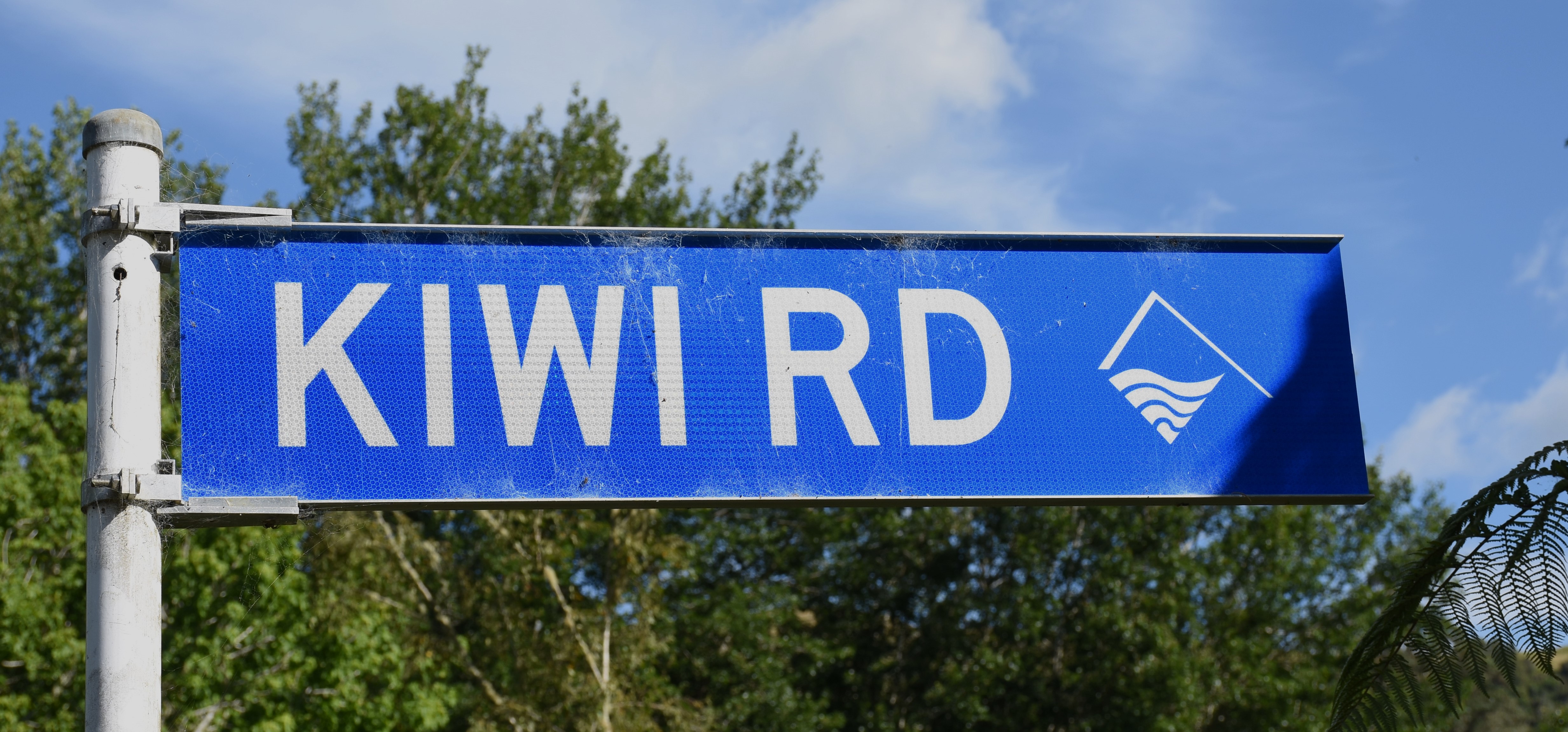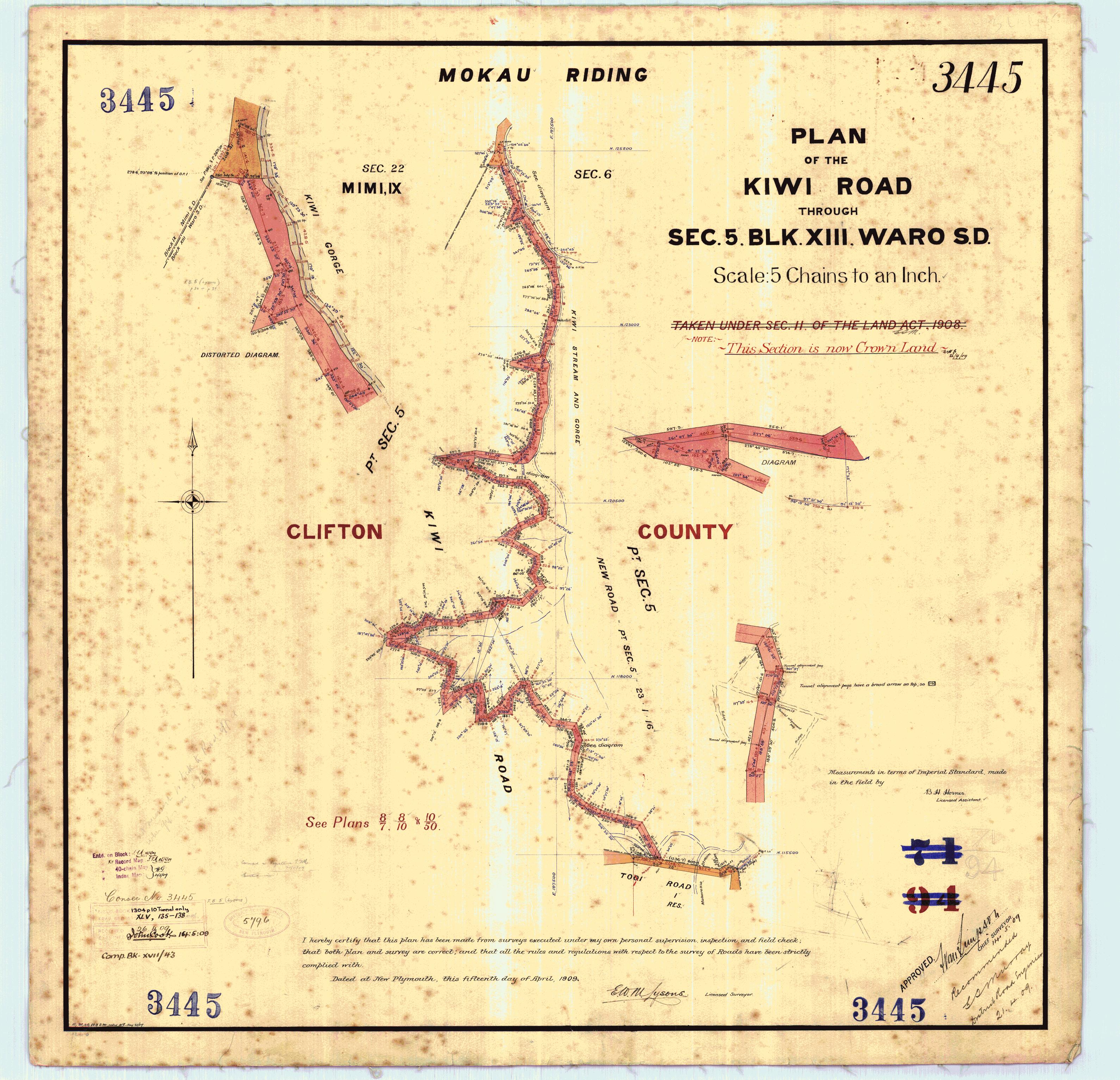



In 2017 the Taranaki Daily News described Kiwi Road as “a mostly-gravel road running through some of Taranaki’s most spectacular and isolated countryside”. It is also very expensive to maintain. At the time, the annual $40,000 annual maintenance cost was calculated to work out at about $10 per day for each of the ten cars that used the remote road. By comparison, Tukapa Street was used by 4,500 cars per day.
Ken Bedford, chair of the Clifton Community Board, expressed concern at the poor state of the road and pointed out that rural roads play an important function both for residents and in providing access to the back country.
The first newspaper reports mentioning the formation of Kiwi Road date back to 1909 (Taranaki Herald 6 March 1909). However, in July of that year the dispirited Makarakia Valley correspondent wrote that “Kiwi Road work, like other back-blocks roads, is at a standstill”. The local MP stepped in and a year later the Waitara correspondent happily reported that Kiwi Road had been completed (at least in part) and would mean “much increased business for the town”. (Taranaki Daily News 2 June 1910)
Four years later work began on the Kiwi Road tunnel to provide access through to Okau Road. ‘Broken through’ in July 1914, it was not until the end of 1915 that the 154 metre tunnel was ready for regular use.
Although there is nothing to confirm the particular reason for Kiwi as the name for this out-of-the-way road, it was likely a choice acknowledging the presence of the western brown kiwi in this part of Taranaki.
A study by the Taranaki Kiwi Trust in 2001 estimated that kiwi numbers were falling by 5.8% a year. DOC and groups including the Taranaki Kiwi Trust, East Taranaki Environment Collective and Rotokare Scenic Reserve Trust work tirelessly to ensure the long-term survival of this species.
In 2021 ten male and female kiwi were introduced to the Kaitake Ranges after an exhaustive pest-eradication programme. Two of the birds, Kōwhai and Aroha, were found dead in July 2023 resulting in renewed monitoring and trapping efforts.
Like the endangered birds, however, back country roads such as Kiwi Road are survivors.
This story was originally published in the Taranaki Daily News.
Please do not reproduce these images without permission from Puke Ariki.
Contact us for more information or you can order images online here.